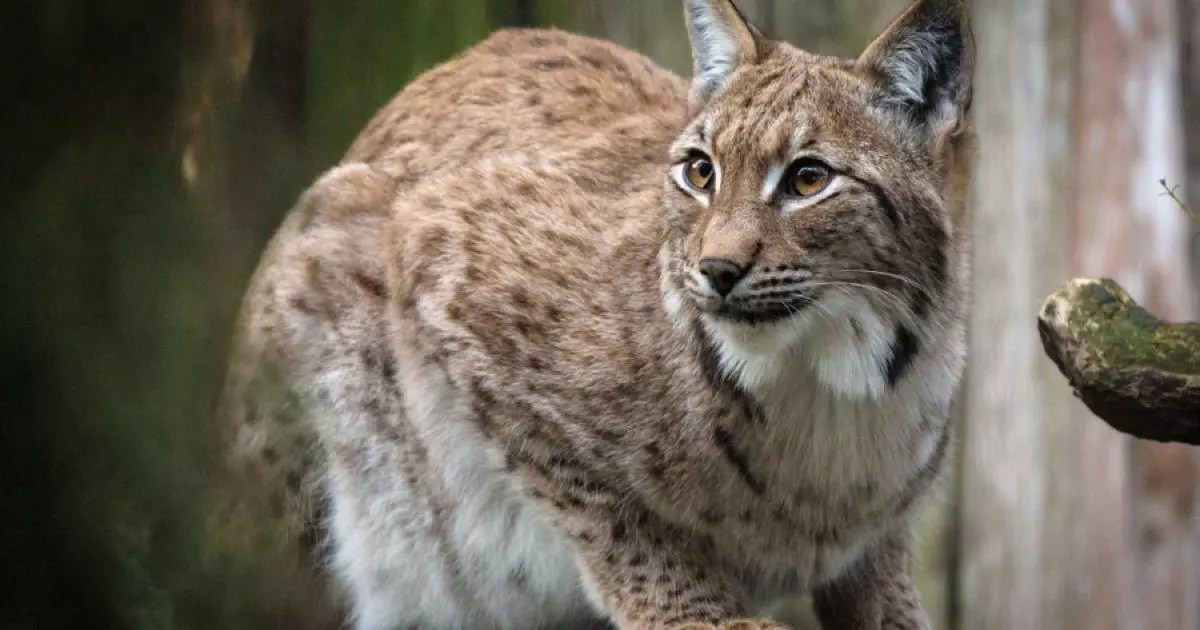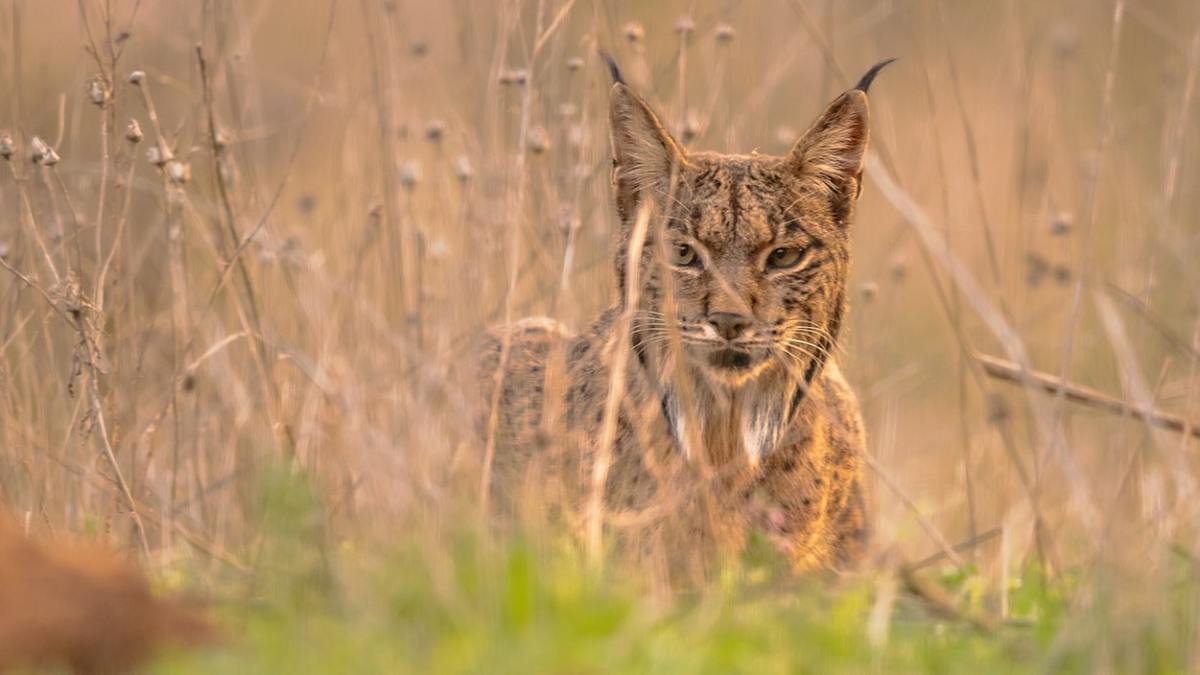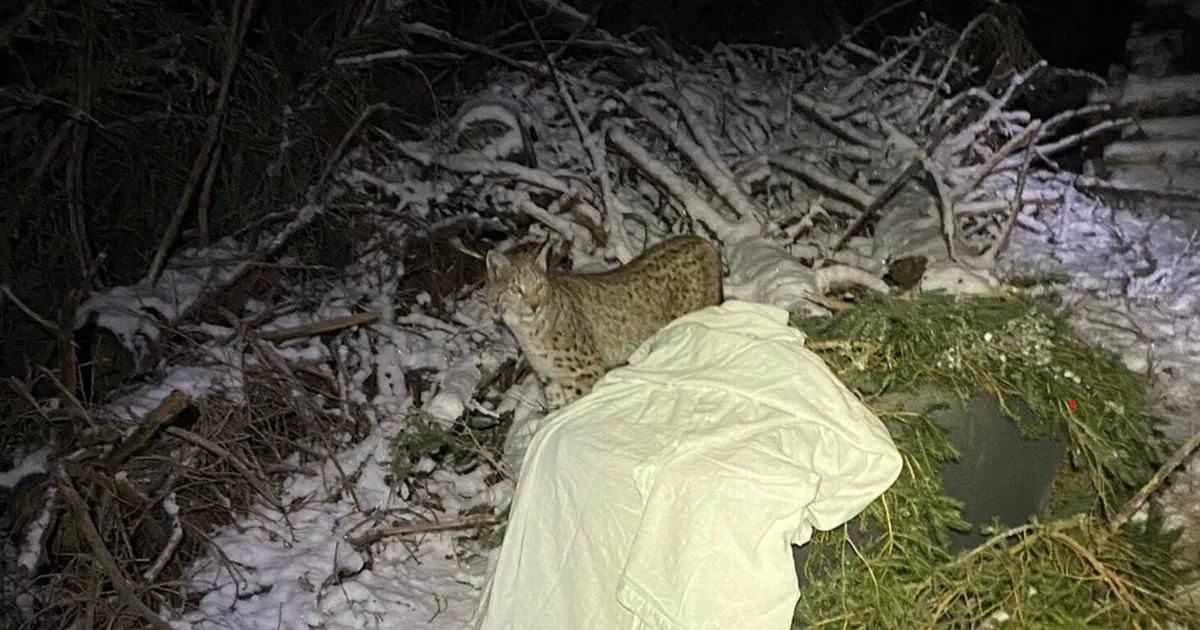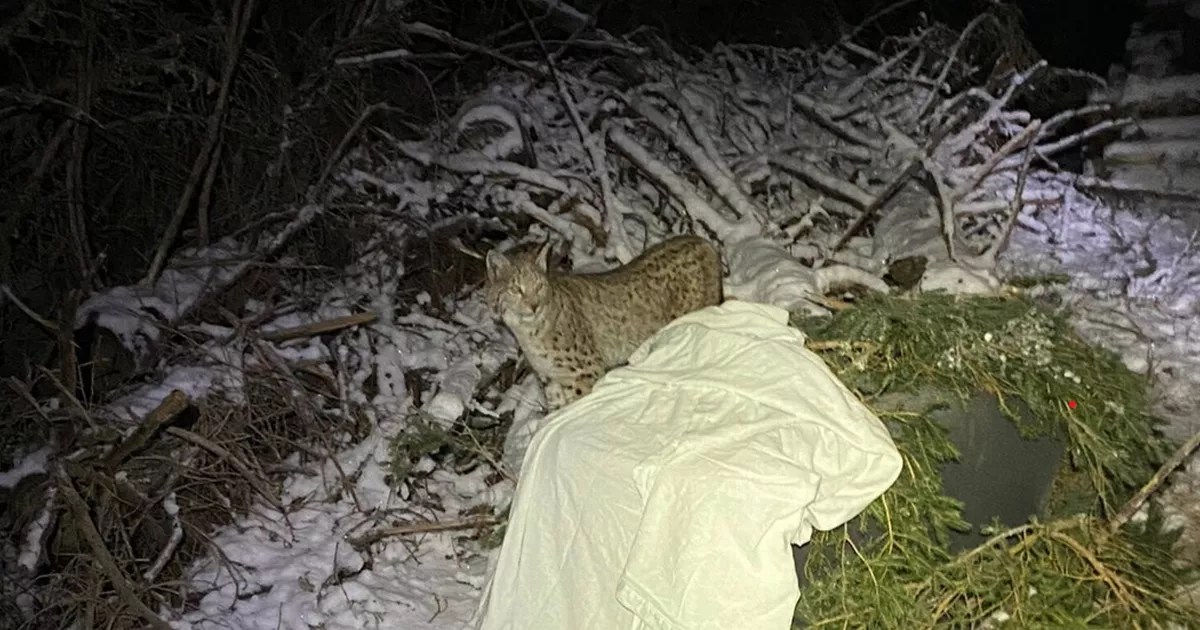Illegally released lynx captured – NatureScot statement: A wild lynx, illegally released into the Scottish Highlands, has been recaptured. This incident sparked a flurry of activity from NatureScot, leading to an official statement, a detailed investigation, and a crucial discussion about wildlife conservation and the potential ecological consequences of such actions. We’ll explore NatureScot’s response, the lynx’s welfare, and the wider implications of this high-profile case.
The statement highlights NatureScot’s swift action in locating and securing the animal. They’ve detailed the ongoing investigation into who released the lynx and why, outlining potential legal ramifications. The lynx’s health is being closely monitored, and plans for its future are being considered, weighing options like relocation to a suitable sanctuary or a rehabilitation program. The incident also raises concerns about the potential impact on Scotland’s native ecosystem and the broader implications for wildlife conservation efforts.
NatureScot’s Response to the Illegal Lynx Release
The illegal release of a lynx in Scotland sparked a swift and comprehensive response from NatureScot, the Scottish nature agency. Their actions highlight the seriousness of the situation and the agency’s commitment to wildlife conservation and the rule of law.
NatureScot’s Official Statement and Actions
NatureScot issued a press release condemning the illegal release, emphasizing the potential risks to both the lynx and the native ecosystem. The statement detailed the agency’s immediate actions, including deploying a team to locate and capture the animal. They also announced the commencement of a full investigation into the incident, collaborating with Police Scotland to identify and prosecute those responsible.
Further actions included coordinating with veterinary professionals to ensure the lynx received appropriate care and monitoring the animal’s health and behavior post-capture.
Timeline of Events

The timeline of events surrounding the illegal lynx release and subsequent capture is crucial in understanding the situation’s rapid progression. While precise details may vary depending on the specific case, a general timeline could look like this:
- Illegal Release: The lynx is illegally released into the wild, the exact date and location initially unknown.
- Discovery and Reporting: Sightings or evidence of the lynx are reported to NatureScot and/or Police Scotland.
- Capture Operation: NatureScot, potentially with assistance from other agencies and experts, initiates a capture operation. This might involve tracking, monitoring, and using specialized equipment.
- Capture and Veterinary Assessment: The lynx is successfully captured and undergoes a thorough veterinary examination to assess its health and condition.
- Investigation Commences: A formal investigation begins to identify those responsible for the illegal release, gathering evidence and interviewing potential witnesses.
Potential Legal Ramifications
Individuals involved in the illegal release of the lynx face serious legal consequences under Scottish wildlife protection laws. Penalties could include substantial fines, imprisonment, and potentially a ban on keeping or handling protected animals in the future. The severity of the punishment will depend on factors such as the intent, the animal’s welfare, and the potential environmental damage caused.
The Lynx’s Condition and Welfare
The welfare of the illegally released lynx was a paramount concern for NatureScot. Immediate action was taken to ensure its safety and well-being, focusing on both physical and mental health.
Immediate Care and Veterinary Attention
Upon capture, the lynx received immediate veterinary attention. This included a comprehensive physical examination to assess its overall health, checking for injuries, malnutrition, or signs of stress. Blood samples were likely taken for analysis, and any necessary treatment, such as medication or wound care, was administered. The animal was likely placed in a secure and controlled environment to minimize further stress.
Long-Term Plan for the Lynx
The long-term plan for the lynx will depend on its health and behavioral assessment. Options could include rehabilitation with the aim of eventual release back into a suitable habitat (potentially in a different location), or transfer to a licensed wildlife sanctuary or zoo where it can receive ongoing care. A thorough risk assessment will be conducted to determine the safest and most appropriate course of action.
So, the illegally released lynx situation in Scotland is a bit of a mess, right? NatureScot’s statement is pretty clear about the risks involved. It’s a stark contrast to the upcoming Bonnaroo lineup, which is totally rocking with Megadeth, Queens of the Stone Age and More Set for Bonnaroo 2026 – a much more controlled and anticipated event.
Hopefully, the lynx situation gets resolved as smoothly as Bonnaroo’s planning.
Lynx Vital Signs and Observed Behaviors

| Date | Time | Vital Sign | Observation |
|---|---|---|---|
| 2024-10-27 | 10:00 | Heart Rate | 120 bpm (Elevated, likely due to stress) |
| 2024-10-27 | 10:30 | Body Temperature | 38.5°C (Within normal range) |
| 2024-10-28 | 09:00 | Behavior | Restless, exhibiting signs of anxiety |
| 2024-10-29 | 14:00 | Appetite | Eating and drinking normally |
Environmental Impact and Conservation Concerns
The illegal release of the lynx raised significant concerns about the potential impact on Scotland’s native ecosystem and ongoing lynx conservation efforts. Introducing a non-native animal, even one seemingly well-intentioned, can have unforeseen consequences.
Potential Ecological Consequences, Illegally released lynx captured – NatureScot statement
- Competition with native predators for resources (e.g., prey animals).
- Disruption of established predator-prey relationships.
- Potential transmission of diseases to native wildlife.
- Genetic contamination if the released lynx breeds with any potential future wild lynx populations.
- Unintended impact on the overall biodiversity of the area.
This incident serves as a stark reminder of the importance of carefully managed reintroduction programs and the potential dangers of unregulated animal releases. Comparing this to other similar incidents, such as the release of non-native species in other ecosystems, highlights the need for stringent regulations and robust enforcement.
Public Perception and Media Coverage: Illegally Released Lynx Captured – NatureScot Statement
The news of the illegally released and captured lynx garnered significant public attention, sparking a range of reactions and opinions across social media and traditional news outlets. NatureScot’s communication strategy played a key role in shaping public perception.
Public Reaction and Media Portrayal
Initial public reaction was mixed, with some expressing concern for the lynx’s welfare and others criticizing the actions of those responsible for the illegal release. Media coverage varied, with some outlets focusing on the conservation aspects and others highlighting the legal ramifications. Social media amplified the discussion, with users sharing their opinions and information, often leading to both informed and misinformed discussions.
So, the illegally released lynx were captured – good news from NatureScot! It’s a reminder that wildlife needs protection. For a complete change of pace, check out the game details for Penn State vs. Notre Dame: Time, TV channel, preview for the if you need a break from conservation news. Then, get back to thinking about how important it is to keep our ecosystems healthy and prevent future illegal releases.
Hypothetical NatureScot Media Statement
“NatureScot is deeply concerned about the recent illegal release of a lynx. We are working diligently to ensure the animal’s welfare and to investigate this incident thoroughly. We want to reassure the public that we are taking all necessary steps to mitigate any potential risks to the environment and to bring those responsible to justice. We appreciate the public’s understanding and cooperation during this time.”
So, the illegally released lynx were captured, according to the NatureScot statement – a bit of a wild story, right? Need a break from all that news? Check out this sweet deal: $5 Tuesday Movie Tickets and $5 Popcorn Are Back! Perfect for unwinding after hearing about escaped lynx. Then, get back to reading up on the NatureScot statement – hopefully, they’ll have updates soon.
Investigation and Legal Proceedings
The investigation into the illegal lynx release is ongoing, involving NatureScot, Police Scotland, and potentially other relevant agencies. The aim is to identify those responsible and bring them to justice.
Potential Suspects and Motivations

Potential suspects could range from individuals with extremist environmental views to those with personal motivations. The investigation will aim to uncover the reasons behind the release, whether it was a deliberate act of activism, a misguided attempt at conservation, or something else entirely. The evidence collected will be crucial in determining the motives and the culpability of those involved.
Potential Charges and Penalties

Depending on the evidence and the outcome of the investigation, those responsible could face charges under various wildlife protection laws. These could include offenses related to the illegal possession, transportation, and release of protected species. Penalties could involve significant fines, imprisonment, and a ban on keeping or handling animals in the future.
Lessons Learned and Future Prevention
The incident underscores the need for enhanced security measures and public awareness campaigns to prevent future illegal releases of protected animals. Several improvements can be implemented to strengthen wildlife protection.
Measures to Prevent Future Incidents
- Improved security protocols at facilities holding protected animals, including enhanced surveillance and access controls.
- Strengthening wildlife protection laws and increasing the penalties for offenses.
- Increased funding for wildlife crime investigations and enforcement.
- Public awareness campaigns to educate the public about the risks of illegal animal releases and the importance of reporting suspicious activity.
Outcome Summary
The illegal release of the lynx serves as a stark reminder of the challenges in balancing wildlife conservation with the potential risks of unintended consequences. NatureScot’s response underscores the importance of robust legal frameworks and proactive measures to prevent similar incidents. The ongoing investigation and the focus on the lynx’s welfare demonstrate a commitment to responsible wildlife management. The incident also highlights the need for increased public awareness about the fragility of ecosystems and the potential repercussions of illegal actions impacting wildlife.
FAQ Section
What type of lynx was it?
The statement doesn’t specify the exact subspecies, but further information may be released as the investigation progresses.
Where exactly was the lynx released?
The precise location of the release is likely being withheld to protect the ongoing investigation and potentially sensitive habitats.
What are the potential penalties for illegal wildlife release?
Penalties can vary but typically include significant fines and even prison sentences depending on the severity of the offense and any resulting damage.
How can I help prevent future incidents?
Support organizations dedicated to wildlife conservation, report suspicious activity, and advocate for stronger wildlife protection laws.
